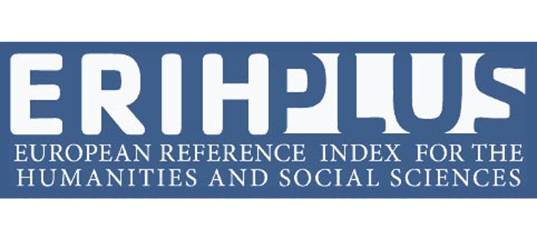Predicting the Effectiveness of Rapid Tests Performed to Patients with COVID-19 through Linear Regression and Random Forest
Abstract
The rapid spread of SARS-CoV2 (COVID-19) has caused a collapse of health systems worldwide, so a strategy to control the spread is the timely detection of the virus through rapid tests, which allows acting and thus giving a timely treatment that reduces its spread. With the help of artificial intelligence techniques, within the subfield of machine learning or machine learning, there have been significant advances that allow speeding up the analysis of large volumes of data. This study aims to determine the effectiveness of rapid tests in detecting covid-19, using machine learning, applying a methodology that involves the creation of linear regression and Random Forest models with the Python programming language. In the methodology used, the models were created, which were then defined and trained, and after performing the tests and predictions, the validation metrics determined the precision and effectiveness of these models. From the results obtained, it is concluded that the random forest model is good since it provided a precision of 61%, but with the linear regression model, it was determined that it has a precision level of approximately 90%, so finally, with these results, health professionals will be able to make reliable predictions regarding the effectiveness of rapid tests as a mechanism that will help to quickly detect the presence of the virus and thus reduce the spread of the virus.
Downloads
Metrics
References
Wu, Y. C., Chen, C. S., & Chan, Y. J. (2020). The outbreak of COVID-19: An overview. In Journal of the Chinese Medical Association (Vol. 83, Issue 3). https://doi.org/10.1097/JCMA.0000000000000270
Guiñez-Coelho, M. (2020). Impacto del COVID-19 (SARS-CoV-2) a Nivel Mundial, Implicancias y Medidas Preventivas en la Práctica Dental y sus Consecuencias Psicológicas en los Pacientes. International Journal of Odontostomatology, 14(3). https://doi.org/10.4067/s0718-381x2020000300271
Cobb, J. S., & Seale, M. A. (2020). Examining the effect of social distancing on the compound growth rate of COVID-19 at the county level (United States) using statistical analyses and a random forest machine learning model. Public Health, 185. https://doi.org/10.1016/j.puhe.2020.04.016
Valencia Portillo, R. T., Amorín Uscata, B., Gonzales-Zubiate, F. A., Juscamaita Medina, K., Sevillano, O. R., & Ramos-Sanchez, E. M. (2020). Pruebas rápidas para COVID-19, la mejor alternativa para Ecuador. Bionatura, 5(3). https://doi.org/10.21931/rb/2020.05.03.21
Palacios Cruz, M., Santos, E., Velázquez Cervantes, M. A., & León Juárez, M. (2021). COVID-19, a worldwide public health emergency. In Revista Clinica Espanola (Vol. 221, Issue 1, pp. 55–61). Elsevier Doyma. https://doi.org/10.1016/j.rce.2020.03.001
Wang, L. L., Lo, K., Chandrasekhar, Y., Reas, R., Yang, J., Eide, D., Funk, K., Kinney, R., Liu, Z., Merrill, W., Mooney, P., Murdick, D., Rishi, D., Sheehan, J., Shen, Z., Stilson, B., Wade, A. D., Wang, K., Wilhelm, C., … Kohlmeier, S. (2020). CORD-19: The COVID-19 open research dataset. In arXiv.
Hedermann, G., Hedley, P. L., Bækvad-Hansen, M., Hjalgrim, H., Rostgaard, K., Poorisrisak, P., Breindahl, M., Melbye, M., Hougaard, D. M., Christiansen, M., & Lausten-Thomsen, U. (2021). Danish premature birth rates during the COVID-19 lockdown. Archives of Disease in Childhood: Fetal and Neonatal Edition, 106(1). https://doi.org/10.1136/archdischild-2020-319990
Guarneri, C., Rullo, E. V., Pavone, P., Berretta, M., Ceccarelli, M., Natale, A., & Nunnari, G. (2021). Silent COVID-19: what your skin can reveal. In The Lancet Infectious Diseases (Vol. 21, Issue 1). https://doi.org/10.1016/S1473-3099(20)30402-3
Yang, J., Hu, J., & Zhu, C. (2021). Obesity aggravates COVID-19: A systematic review and meta-analysis. In Journal of Medical Virology (Vol. 93, Issue 1). https://doi.org/10.1002/jmv.26237
Patrício Silva, A. L., Prata, J. C., Walker, T. R., Duarte, A. C., Ouyang, W., Barcelò, D., & Rocha-Santos, T. (2021). Increased plastic pollution due to COVID-19 pandemic: Challenges and recommendations. In Chemical Engineering Journal (Vol. 405). https://doi.org/10.1016/j.cej.2020.126683
Sekulić, A., Kilibarda, M., Heuvelink, G. B. M., Nikolić, M., & Bajat, B. (2020). Random forest spatial interpolation. Remote Sensing, 12(10). https://doi.org/10.3390/rs12101687
Cobb, J. S., & Seale, M. A. (2020). Examining the effect of social distancing on the compound growth rate of COVID-19 at the county level (United States) using statistical analyses and a random forest machine learning model. Public Health, 185. https://doi.org/10.1016/j.puhe.2020.04.016
Wang, J., Yu, H., Hua, Q., Jing, S., Liu, Z., Peng, X., Cao, C., & Luo, Y. (2020). A descriptive study of random forest algorithm for predicting COVID-19 patients outcome. PeerJ, 8. https://doi.org/10.7717/peerj.9945
Iwendi, C., Bashir, A. K., Peshkar, A., Sujatha, R., Chatterjee, J. M., Pasupuleti, S., Mishra, R., Pillai, S., & Jo, O. (2020). COVID-19 patient health prediction using boosted random forest algorithm. Frontiers in Public Health, 8. https://doi.org/10.3389/fpubh.2020.00357
Pramanik, M., Udmale, P., Bisht, P., Chowdhury, K., Szabo, S., & Pal, I. (2020). Climatic factors influence the spread of COVID-19 in Russia. International Journal of Environmental Health Research. https://doi.org/10.1080/09603123.2020.1793921
Biau, G. (2012). Analysis of a random forests model. In Journal of Machine Learning Research (Vol. 13).
Watson, G. L., Xiong, D., Zhang, L., Zoller, J. A., Shamshoian, J., Sundin, P., Bufford, T., Rimoin, A. W., Suchard, M. A., & Ramirez, C. M. (2020). Fusing a Bayesian case velocity model with random forest for predicting COVID-19 in the U.S. In medRxiv. https://doi.org/10.1101/2020.05.15.20102608
Sharma, S. K., Lilhore, U. K., Simaiya, S., & Trivedi, N. K. (2021). An improved random forest algorithm for predicting the COVID-19 pandemic patient health. Annals of the Romanian Society for Cell Biology, 25(1).
Chanchí Golondrino, G. E., Campo Muñoz, W. Y., & Sierra Martinez, L. M. (2020). Aplicación de la regresión polinomial para la caracterización de la curva del COVID-19, mediante técnicas de machine learning. Investigación e Innovación En Ingenierías, 8(2). https://doi.org/10.17081/invinno.8.2.4103
A Study of Real World Data Visualization of COVID-19 dataset using Python. (2020). International Journal of Management and Humanities, 4(8). https://doi.org/10.35940/ijmh.h0834.044820
PDF (Español (España)) 481 HTML (Español (España)) 0
Authors maintain the rights to the articles and are therefore free to share, copy, distribute, execute, and publicly communicate the work on their personal websites or in institutional deposits, after its publication in this journal, as long as they provide bibliographic information that certifies its publication in this journal.
The works are under one https://creativecommons.org/licenses/by-nc-nd/4.0/




























